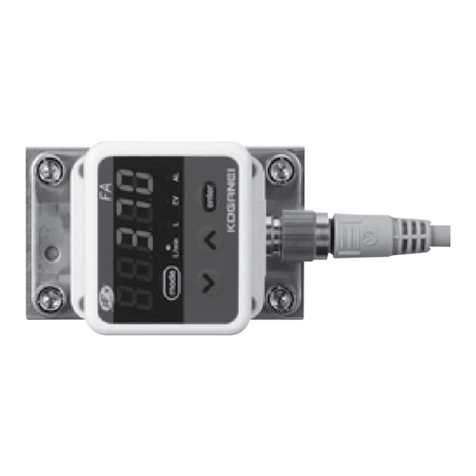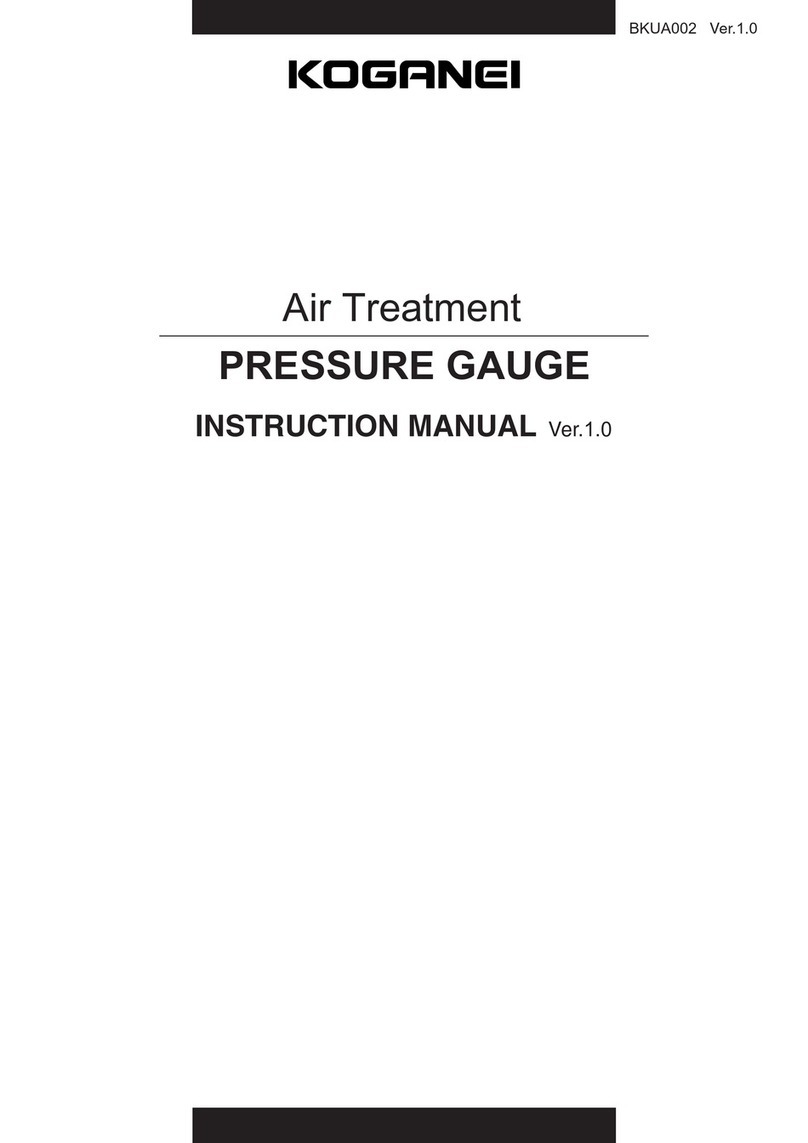
- 2 -
Before selecting and using the products, please read all the Safety Precautions carefully to ensure proper product use.
The Safety Precautions described below are to help you use the product safely and correctly, and to prevent injury or damage to you, other people, and assets.
Always be sure to comply with ISO4414 (Pneumatic fluid power - Recommendations for the application of equipment to transmission and control systems) and
JIS B8370 (Pneumatic system regulations) safety regulations.
■This product was designed and manufactured for use in general industrial machinery.
■
When selecting and handling equipment, the system designer or another person with sufficient knowledge and experience should always read the Safety
Precautions, catalog, Instruction Manual and other literature before commencing operation. Improper handling is dangerous.
■
After reading the Instruction Manual, catalog, and other documentation, always store them in a location that allows easy availability for reference to users of this product.
■
Whenever transferring or lending the product to another person, always attach the catalog, Instruction Manual, and other information to the product where they are
easily visible in order to ensure that the new user can use the product safely and properly.
■T
he danger, warning and caution items listed under these Safety Precautions do not cover all possible contingencies. Read the catalog and Instruction Manual
carefully, and always keep safety first.
DANGER
Indicates situations that can be clearly predicted as dangerous.
Failure to avoid the situation creates the risk of death or serious injury.
It could also result in damage or destruction of assets.
WARNING
Indicates situations that, while not immediately dangerous, could become dangerous.
Failure to avoid the situation creates the risk of death or serious injury.
It could also result in damage or destruction of assets.
CAUTION
Indicates situations that, while not immediately dangerous, could become dangerous.
Failure to avoid the situation creates the risk of minor or semi-serious injury.
It could also result in damage or destruction of assets.
ATTENTION
While there is little chance of injury, this content refers to points that should be observed for appropriate use of the product.
The directions are ranked according to degree of potential danger or damage: “DANGER”, “WARNING”, “CAUTION”, and “ATTENTION”
Safety Precautions
DANGER
●
Do not use the product for the purposes listed below:
1.
Medical equipment related to maintenance or management of human lives or bodies.
2.
Machines or equipment designed for the purpose of moving or transporting people.
3.
Critical safety components in mechanical devices.
This product has not been planned or designed for purposes that require
high levels of safety. Using the product in any of the ways described above
creates the risk of loss of human life.
●
When mounting the product and workpiece, always make sure they are firmly
supported and secured in place. Falling, dropping, or abnormal operation of
the product creates the risk of personal injury.
●
Never attempt to modify the product in any way. Doing so creates the risk of
injury, electric shock, fire, etc.
●
Never attempt inappropriate disassembly, assembly or repair of the product
relating to basic construction, or to its performance or to functions. Doing so
creates the risk of injury, electric shock, fire, etc.
●
Do not splash water on the product. Water spraying on the product, washing
the product, or using the product under water creates the risk of malfunction,
leading to injury, electric shock, fire, etc.
●
Do not use the product in locations with or near dangerous substances such
as flammable or ignitable substances. This flow meter is not explosion-proof.
Doing so creates the risk of ignition and fire.
●
Do not attempt any adjustment (connecting or disconnecting tubes or
connectors, piping work, etc.) to mechanisms attached to the product while the
product is operating. Abnormal operation creates the risk of personal injury.
WARNING
●
Do not use the product in excess of its specification range. Doing so creates
the risk of product breakdown, loss of function, or damage. It could also
drastically reduce the product's operating life.
●
Before supplying air or electricity to the device and before starting operation,
always conduct a safety check of the area of machine operation.
Unintentional supply of air or electricity could possibly result in electric
shocks, or in injury caused by contact with moving parts.
●
Do not touch terminals and other exposed electric parts while power is turned
on. Doing so creates the risk of electric shock and abnormal operation.
●
Do not allow the product to be thrown into fire.
Doing so creates the risk of explosion, resulting in the release of toxic gasses.
●
Do not sit on the product, place your foot on it, or place other objects on it.
Doing so creates the risk of injury due to tripping or the product tipping over,
resulting in product damage and abnormal, erratic, or runaway operation.
Always read these precautions carefully before use.
●
When conducting any kind of operation for the product, such as maintenance,
inspection, repair, or replacement, always turn off the air supply completely
and confirm that residual pressure inside the product or in piping connected to
the product is atmospheric pressure before proceeding.
In particular, be aware that residual air will still be in the air compressor or air
storage tank.
●
Do not allow cables to be damaged.
Allowing a cable to become cut, bent excessively, pulled, rolled up, placed
under heavy objects, or squeezed between two objects creates the risk of
current leaks or defective continuity that can lead to fire, electric shock, or
abnormal operation.
●
Do not allow the flow meter to be exposed to external magnetism while it is operating.
Unintended movements could result in damage to the equipment or in personal injury.
●
Use safety circuits or design a system that prevents damage to machinery
and personal injury when the machine is shut down due to an emergency
stop or electrical power failure.
●
Do not share a conduit with or wire parallel to power lines or high voltage lines.
Noise from these lines may cause the flow meter to operate erratically.
●
When wiring, take care to ensure that wiring polarity is correct.
Incorrect polarity creates the risk of damage to the flow meter.
●
Do not use any type of medium that is not specifically stipulated in the
specifications. Using a non-specified medium could lead to short term loss of
function, sudden degradation of performance, and a reduced operating life.
CAUTION
●
Do not use in locations that are subject to direct sunlight (ultraviolet rays),
dust, salt, iron powder, humidity, or in the media and/or the ambient
atmospheres that include organic solvents, phosphate ester type hydraulic oil,
sulfur dioxide, chlorine gas, acids, etc. It could lead to early shutdown of some
functions or a sudden degradation of performance, and result in a reduced
operating life. For the materials, see the Major Parts and Materials.
●
When installing the product, be sure to allow adequate work space around it. Failure
to do so will make it more difficult to conduct daily inspections or maintenance,
which could eventually lead to system shutdown or damage to the product.
●
Do not use the flow meter in locations subject to large electrical currents or
strong magnetic fields. It could result in erratic operation.
●
Do not scratch, dent, or deform the product by climbing on it, using it as a scaffold,
or placing objects on top of it. Doing so creates the risk of damage to or breakage
of the product, resulting in operational shutdown or degraded performance.
●
Always post an "operations in progress" sign for installations, adjustments, or
other operations, to avoid unintentional supplying of air or electrical power,
etc. Unintended air or power supply can cause electric shock or sudden
operation, creating the risk of personal injury.





























